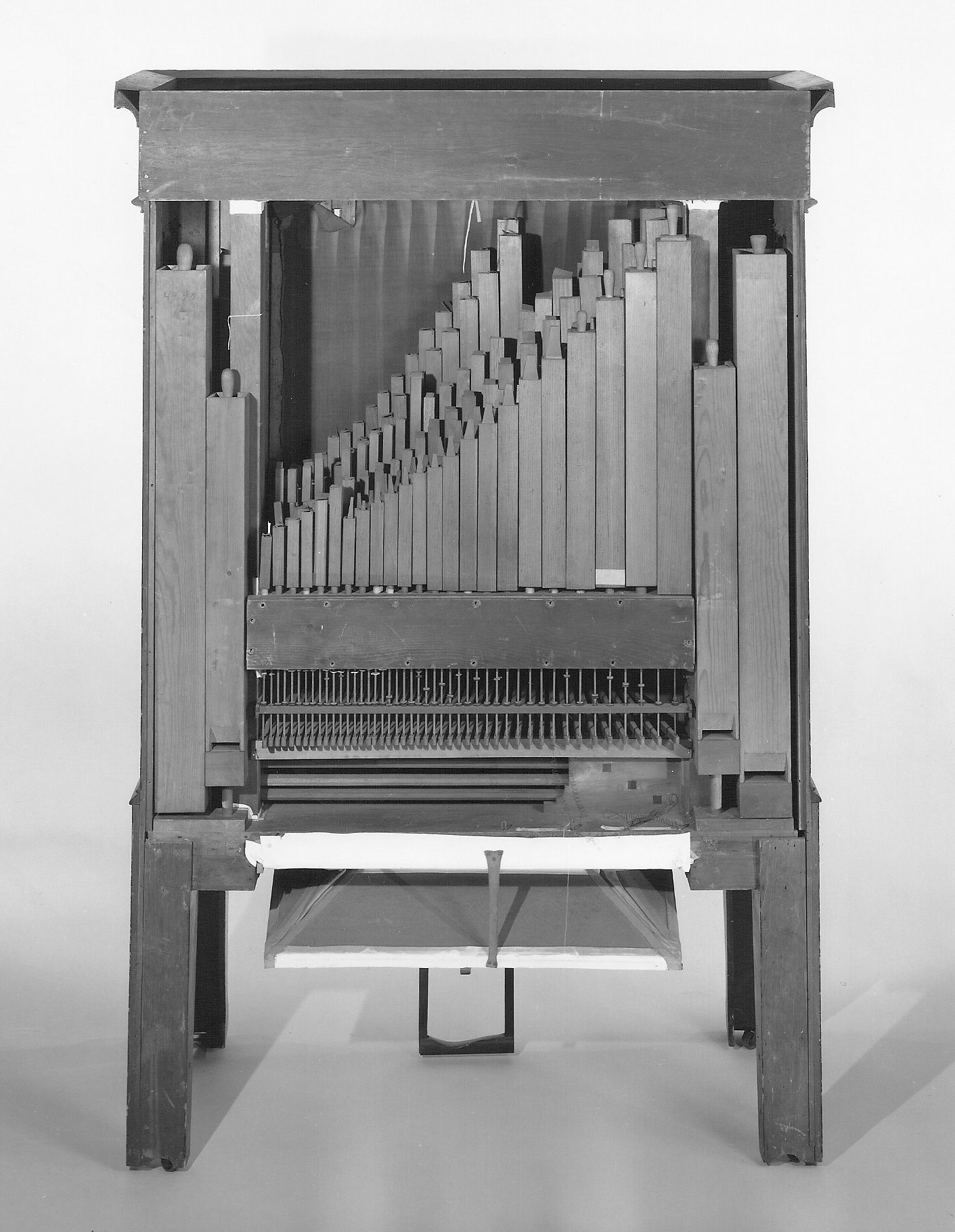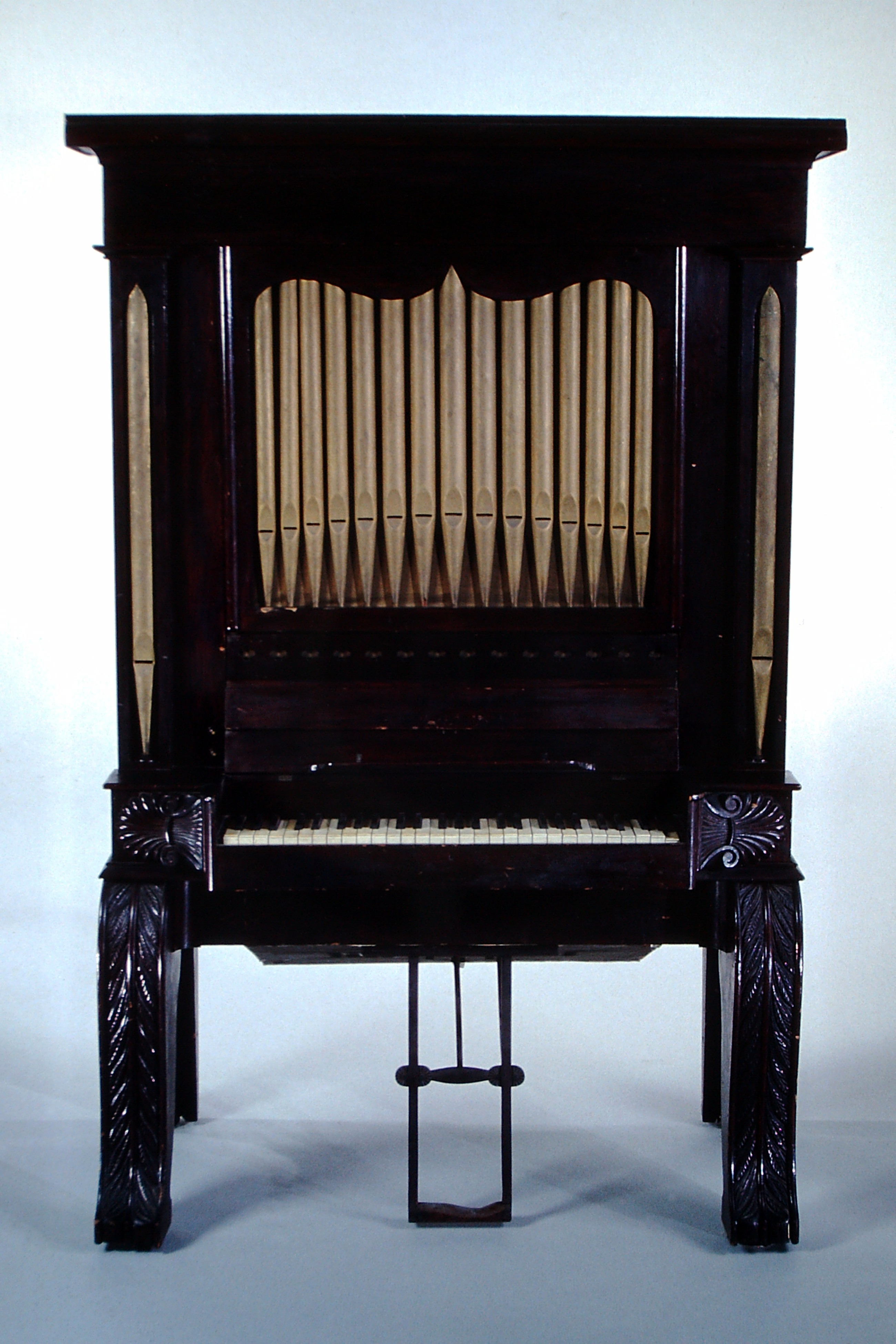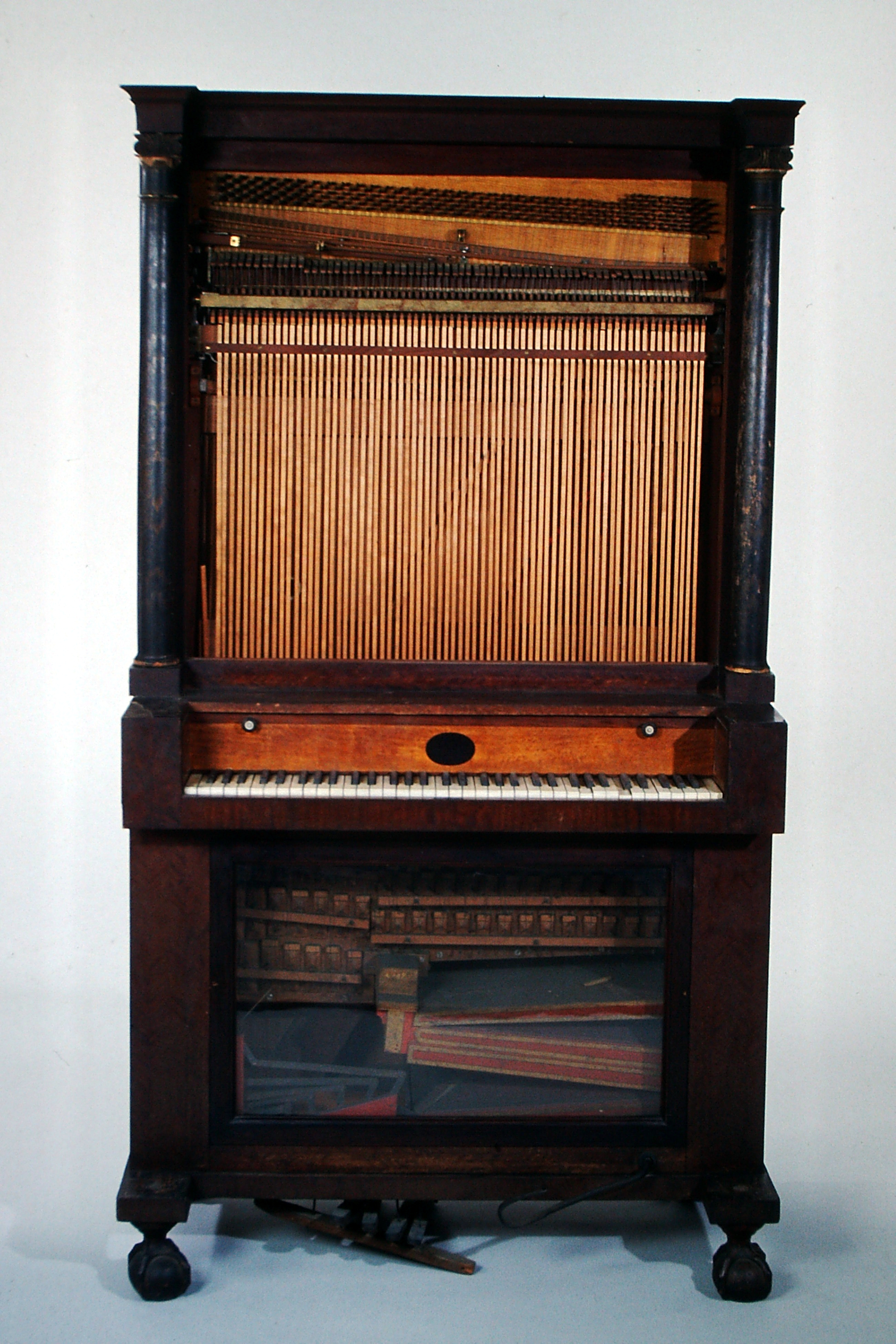Chamber Organ
Attributed to George Clisbee American
Not on view
The chamber organ is a moderately-sized piped organ. It typically has a single manual, a limited number of stops, and a limited pedalboard or no pedals at all. It is generally intended for use in small chapels, in homes, or other intimate rooms. As it is capable of long sustained tones, it is sometimes preferable to harpsichord as a continuo instrument in chamber ensembles.
Such instruments might also be used in small churches, like those found in small towns and villages throughout the United States in the nineteenth century. Chamber organs were largely usurped by reed organs after the middle of the century.
Technical description: One 53-note manual F-a3 with ivory naturals, ebony sharps; disposition from rear of chest, with basses arranged at sides: 8' Stopped Bass F-c, 8' Stopped Flute from c# (open from a#2), 4' open Principal (four bass pipes on each side), 8' Flute stopped f-cl, open from c#1 (probably common 8' stopped bass F-f); two wood knobs with ivory center dot apparently control two front registers; no slide for back register; all pipes of conifer (possibly spruce) with hardwood caps; stoppers tapered except for bass stoppers which are untapered; no nicking, open feet, open pipes tuned with soft metal blades at top; single-fold feeder under chest operated by single pedal at front; single-fold reservoir on top of case, connected by wood ducts to feeder; from c#, trackers fan out to pallet box at back of chest; bass (F-c) has eight rollers and must always be on since pallet box has only 45 notes; stop action for two front registers uses two heavy wood connections apparently milled from single piece which also forms shank and knob; four miscellaneous springs below bass end of chest perhaps meant to lighten action on stiff notes; case possibly mahogany, heavily varnished, center front of half-round, gold-painted dummy pipes with fabric (possibly silk)behind, also the same fabric in side panels; supported by heavy curved legs, front two having carved leaf motif on front; machine-carved scallop motifs flank keyboard. (Laurence Libin 1997)
.
Due to rights restrictions, this image cannot be enlarged, viewed at full screen, or downloaded.
This artwork is meant to be viewed from right to left. Scroll left to view more.





